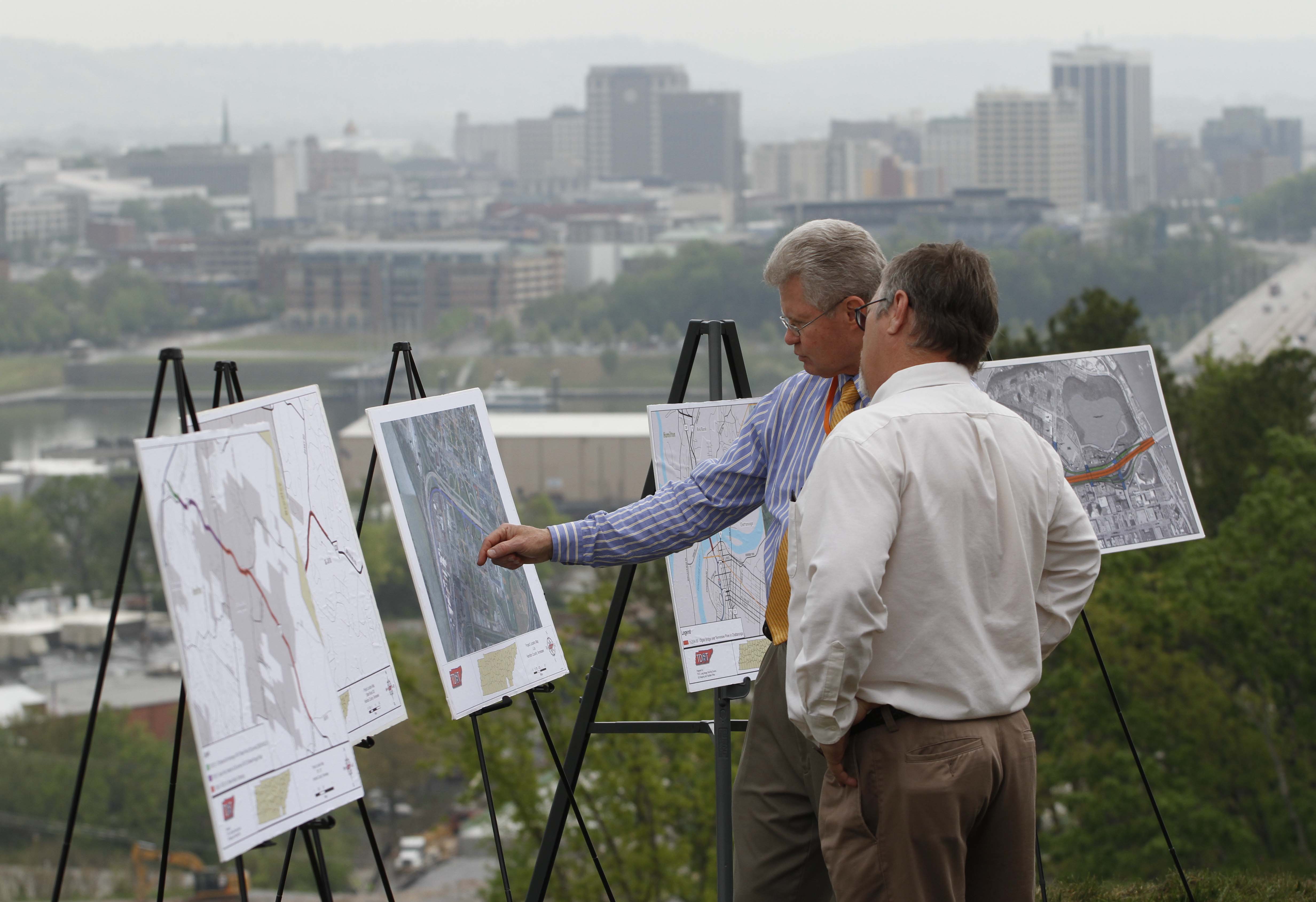VIDEO
This story is featured in today's TimesFreePress newscast.
MORE TDOT PROJECTSEast Brainerd Road: $14.5 million. Widening a 1.9-mile section from east of Graysville Road to Bel-Air Road. Scheduled to start in 2014 fiscal year.Apison Pike: $26.7 million. Widening a 2.2-mile section from Old Lee Highway to SR 321. Scheduled to start in 2015 fiscal year.Source: Tennessee Department of Transportation
Two years ago, Chattanooga dentist Charles Holt Jr. was making plans to move out of his downtown office so TDOT could put an exit ramp right through his building.
Then he went on a two-week vacation to Italy and when he came back, the plan to rework the downtown section of Highway 27 had been delayed. Again.
"I used to get excited when they said they'd do something," he said from his practice at 1301 Carter St. "It was supposed to happen in 2010 and didn't. It was supposed to happen in 2011 and didn't. Last year I rested pretty easy. And this year I'm still waiting."
Tennessee Department of Transportation Commission John Schroer said Tuesday that the waiting is over. Plans once again are moving forward on an $80 million project to widen and update the stretch of Highway 27 that cuts through Chattanooga, he announced.
The renovation will add two lanes to the Olgiati Bridge and rework the highway's current tight corners and short off-ramps. Construction is scheduled to start in 2015 and should be finished in 2017.
The 1.5-mile stretch of Highway 27 has been on TDOT's radar for years. Last year, a similar proposal was pulled from the agency's three-year plan after some city officials objected to the state's design.
The revised proposal, once again listed in TDOT's three-year plan, is essentially the same as the nixed plan. The new plan calls for the same frontage road to run parallel to Highway 27 -- which is designed to pull southbound traffic off the bridge and guide drivers into the city through stoplights and left-turn lanes -- and keeps the same layout of most off- and on-ramps.
The most significant change in the revised plan is the removal of a roundabout at M.L. King Boulevard in favor of a straight, stop-lighted intersection.
That roundabout was a major concern in the old plan, said Kim White, head of River City Co.
"If we're trying to create this great corridor, that doesn't make it pedestrian-friendly," she said.
In the year since the plan was delayed, TDOT officials have met extensively with city officials and with River City. Chattanooga Mayor Andy Berke said he appreciates TDOT's flexibility.
"Through the discussions with us during the last year, I learned that [Schroer] cares deeply about what is best for the community and understands that the people who are local know that best," he said during his first day in office.
In addition to ditching the roundabout, the plan now includes extra landscaping and lighting aimed at keeping the Westside connected to the rest of downtown, despite the widened corridor.
"The fear is that this roadway will segregate this community from the city," said Wes Hughen, TDOT Region 2 director of project development, pointing at a map. "So they figured out how to landscape it so that these bridges don't look like tunnels, adding extra lights and really making it a walkable community."
The construction on the downtown corridor will start after the work to widen the artery between Signal Mountain and the Olgiati Bridge is finished in late 2014. That project is estimated to cost about $105 million and initially was scheduled to be complete by October 2014, although officials have pushed that estimate back to December 2014.
"Chattanooga is ready and ripe for some massive improvements and growth," Schroer said. "From an economic standpoint, you have everything you need to boost this."
But Holt, who still will need to move out of his office when the plans go forward, said he'll believe it when he sees it.
"I can't afford to make my plans because they could come back right at the last minute," he said. "It's going to put me in a really hard situation, to relocate on the spur of the moment."
Still, Hamilton County Mayor Jim Coppinger said he thinks the new road can only help Chattanooga.
"Every time you see this kind of infrastructure, it increases the quality of life in Hamilton County," he said. "And that's one of the things we love most in this county -- quality of life."
Some city planners still aren't sold on the plan. Urban designer Eric Myers was part of a team that dreamed up a new vision for Chattanooga's Fourth Street during last year's Urban Design Challenge, sponsored by River City Co. That proposal called for major changes -- like a $10 million walking bridge and a $15 million expansion of the Creative Discovery Museum -- aimed at creating a pedestrian and tourist-friendly corridor.
"It seemed to be very attractive to local business leaders," Myers said. "But it really wasn't popular with TDOT, and I understand that. They have to design roadways to meet public safety standards. We're not transportation designers, we're urban designers -- and sometimes those two seem to clash."
He added that the historic intent of that section of road was to make Chattanooga more accessible to the rest of the region and state, and he thinks the new plan doesn't stay true to those roots.
"It's concerning to me that one of the primary concerns is getting through Chattanooga now," he said.

